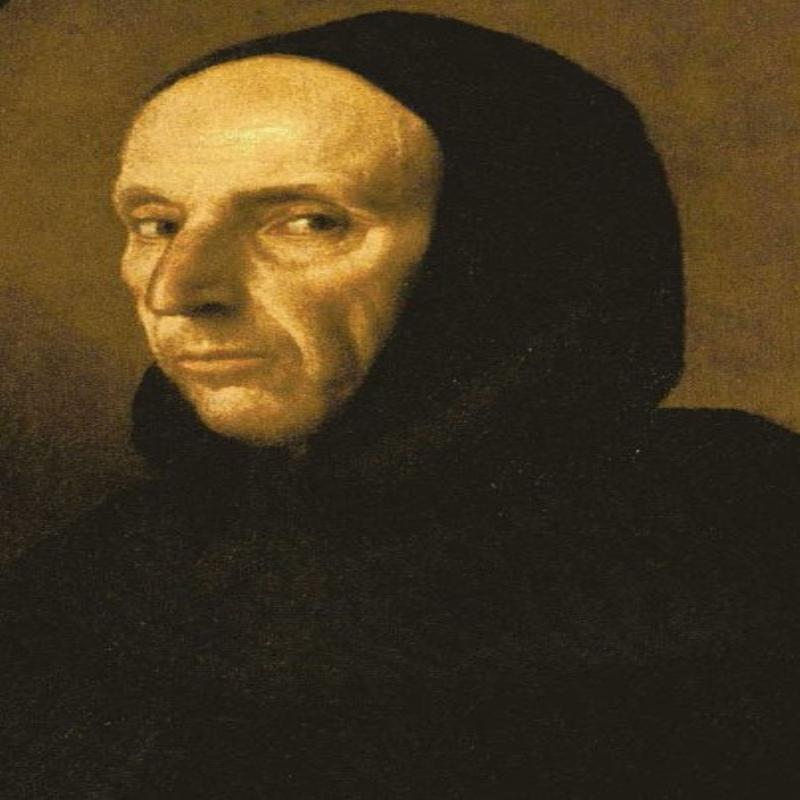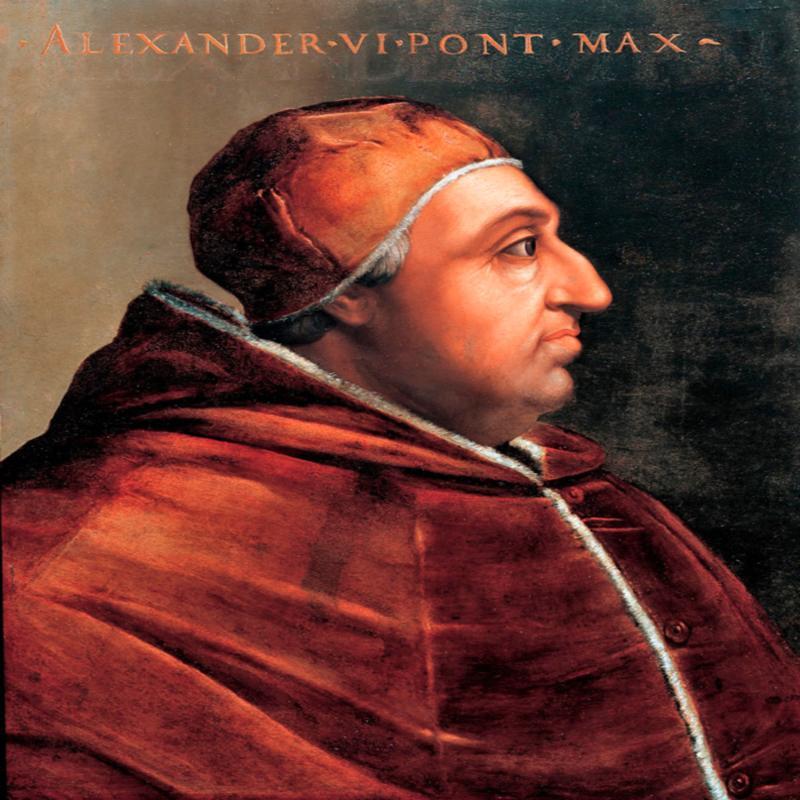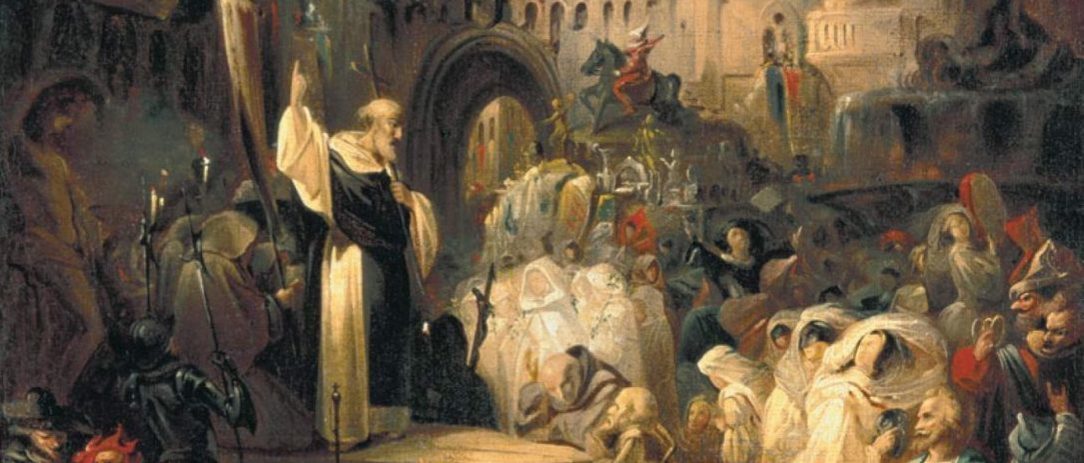Savonarola: Bonfire of the Vanities
Posted on 21st February 2021
Is it possible to govern according to the Word of God? Not just from scripture and the interpretation of religious texts but in direct communication with the Almighty? One man thought so and was willing to try, that man was Girolamo Savonarola.
Born in the Italian City State of Ferrara on 21 September 1452, he was of noble blood and had a comfortable and cosseted upbringing fortunate then only to witness the indignities of poverty and never have to endure them.
He was educated at the University of Ferrara where he studied art and theology which opened several possible professions to him the most likely being law, but he opted instead for a career in the Church. It was not an obvious choice, and some say it was the result of his despair at unrequited love for a life in clerical vestments never appeared to come naturally to him.

From the outset he was a vocal and outspoken critic of the Church which he often referred to as a harlot and a whore both vain and proud. This brought him a great deal of attention but by no means impressed the Church hierarchy. Yet he seemed to be of little significance and was considered more of a crank than a danger to religious orthodoxy.
Always a political man he spurned the opportunity to become a Franciscan monk to join the more secular Dominican Order who he believed had a firmer grasp on the realities of life. In 1475 he was sent to the Monastery of San Domenico near Bologna where he was to remain until 1482 when he was transferred to Florence.
Being a physically unattractive man ungainly with large dark eyes, a hooked nose and totally lacking in charisma he turned few heads; while his dull oratory failed to charm or inspire. Nevertheless, he remained true to the core principles of the message he preached, that apostasy and sinfulness were rife and that failings to adhere to the teachings of Jesus Christ would bring the Wrath of God down upon those who shunned Him.

His convictions and his determination to have them heard did at least bring him to the attention of the Medici, the Ruling Family of Florence, and in particular Lorenzo the Magnificent who became his patron but despite having such a powerful sponsor Savonarola had disappointed the Dominican’s who recalled him in 1487; but believing that Savonarola’s firmness of character if not his personality would help shore up his own wavering authority Lorenzo the Magnificent invited him back to Florence three years later.
During the intervening period however, Savonarola had undergone a transformation, his oratory was no longer dull but impassioned, his rhetoric sharp and scathing and his vision apocalyptic. He was soon to repay the Medici for their generosity by becoming their most vocal and severest critic. He had long despised the corruption in the Church and now he vehemently opposed what we now know as the Renaissance equating the one very much with the other and the obvious love of opulence and splendour as exemplified by the Medici that came with it. For they were great patrons of the arts and spent lavishly on display, on object d’art, in engaging artists and commissioning grand engineering projects at a time when unemployment and poverty was rife in Florence.
Savonarola preached passionately against such vanities. He had visions, he said, and what he saw was the Coming of the Final Days. He had been in direct communication with God and what He had told him was that Florence was in imminent danger of Hell and that only a vigorous morality could save them, and people were increasingly willing to believe him.
Savonarola’s reputation as a prophet had been enhanced when in 1490, he had predicted that both Pope Innocent VI and Lorenzo the Magnificent would die in the year 1492. When they both did people became even more inclined to believe that maybe he was in communication with God after all.
Lorenzo the Magnificent’s successor was his son Piero but unlike his father Piero was a weak and unstable young man who was unable to cope with the pressures of governing a city and his rule saw the Medici grip on power loosen.
The opulence of the Medici and the ever more ostentatious ways in which they flaunted their wealth was the cause of great resentment among the people. In the meantime, the French invasion of Italy in 1492, and their demand that Florence sign a favourable treaty of alliance which would have been a deeply unpopular move in the city left the Medici in a quandary and unsure what to do. If they signed the treaty, then it was likely that the people would rise-up and depose them. If they did not, then the French would take the city by force. Worse was to follow when in the summer of 1493 an outbreak of the plague struck the city. It was said Savonarola, the Judgement of God upon them.

Savonarola stepped up his campaign against the Medici and his speeches were littered with accusations that they were in league with the Devil and a people willing to listen now flocked to his Church at San Marco to hear him speak. They also came to see in his visions of the Coming of the Last Days and the Apocalypse people their own salvation. He told them; "I am the hailstorm that shall break the heads of those who do not take shelter." A witness described the effects of his preaching: “People’s faces glazed with terror, tears fell from their eyes, and they beat their breasts and cried for mercy”.
For he did not merely communicate with God but journeyed to heaven where he met with the Virgin Mary who told him ‘Florence will be more glorious than ever before that its wings will extend farther than could be imagined; that she would protect the city, but the path will be a hard one. Florence was God’s city but first the people must rid themselves of their vanities. Upon flames of purification, they must cast their trinkets, their frivolities’.
Wealth was sin, power was sin and for a time at least the people would embrace Savonarola’s preaching with enthusiasm – they would be saved after all. For his was the voice of the Righteous and with French backing and the support of the poor he became the obvious choice to replace the Medici and when the incompetent Piero was forced to flee the city in fear of his life that is exactly what happened.
From the start Savonarola made it clear that Florence would be a Christian Republic. God was now the law and Savonarola his servant and God told him that the people were to be moral and virtuous for that was their only path to salvation; as such, all vice and revelry would cease and all activities that pertained to it, gambling, music, dancing, street entertainment and theatre were banned. Promiscuity would no longer be turned a blind eye to, prostitutes were to be harshly dealt with, and homosexuality, or more particularly the act of sodomy previously tolerated would now be punishable by death. Thousands now fled the city whilst hundreds of others were burned at the stake for acting against the Will of God.
A Godly Florence, even a critical one was tolerable to the Vatican while the Borgia Pope found a visionary who spurned wealth and power preferable to a Medici Clan which had both but an alliance with France was another matter.

In the summer of 1497, Savonarola initiated the Bonfire of the Vanities.
Vice was to be materially as well as morally expunged from the city and young boys and girls, accompanied by adult enforcers, were sent to every house in the city to remove those items that led to lax morality – dice, playing cards, musical instruments, ornate objects, mirrors, cosmetics, fine clothes, and heretical literature were all removed and taken to the Piazza della Signoria in the centre of the city where they were burned on pyres sixty feet high. The burnings were carried out with enthusiasm by the poor who saw the elimination of the luxury indulged in by the rich as the last step to their own salvation – wasn’t Christ the Messiah of poor fisherman and it was said that works by the artist Sandro Boticelli were thrown into the flames by Savonarola himself.
One opportunistic Venetian merchant did make the City Council an offer for the discarded loot, but they remained pure to the deed and declined his offer.
As time wore on however and The Last Days failed to materialise it became increasingly clear that Savonarola did not have the solution to the city’s problems. The plague was by this time hitting the city hard and taking its toll of the population and every day more and more corpses were being thrown onto the funeral pyres. Unemployment also remained high and people starving on the city streets became a familiar sight.
In the meantime, Savonarola refused to enact policies to stimulate trade because he believed the making of money to be a sin.

In an attempt to bring Savonarola to heel and make Florence a de facto fiefdom of Rome, Pope Alexander VI banned the Christian world from undertaking any commercial activity with the city. The first sign of antagonism towards Savonarola’s rule soon followed when during the Ascension Day Speech he gave at the Church of San Marco on 4 May 1497, he was heckled by the crowd.
But he would not be made to stand aside. He warned the people to remain vigilant and to oppose the Signoria (the Ruling Council of Florence) and those who would impose their authority: “If he that would summon a parliament be of the Signoria, let his head be cut off; if he not be of it, let he be proclaimed a rebel and all his goods be confiscated. Should the Signoria seek to summon a parliament all may cut them to pieces without sin.”
Savonarola’s response to criticism was to preach the Apocalypse even more vigorously and he sent his emissaries Friar Silvestro and Friar Da Pescia onto the streets to preach that the Flames of Hell awaited those who opposed The Last Days. But where were these Last Days? And if Savonarola was in direct communication with God, then why didn’t he ask God to come to their aid? Aware of the growing opposition Savonarola decided to begin another Bonfire of the Vanities with the proclamation: “We must remove those things, those earthly luxuries that turn people from God. There can be no salvation until every last one has been removed and destroyed.”
But this time there was little enthusiasm for his so-called Bonfire, doors were locked, and summons went unanswered, access to streets were barred as his new attempt at a moral cleansing only caused deep resentment. The more the once venerated Savonarola preached the Apocalypse the more, he was ignored, the people no longer believed him neither were they any longer afraid of his admonitions, they wanted rid of him.
The Vatican in Rome which had never quite known how to deal with Savonarola and had in an effort to placate him, even appointed him Vicar-General, now firmly turned against him. Yet despite his constant railings against the Church, it was not to be religion that would seal his fate but politics.
The Vatican had supported the Medici in their conflict with the French and when an alliance of Italian City States defeated the French in battle and forced them to abandon their campaign, Savonarola was stripped of his political support. Now he had nothing else to fall back upon but religious convictions and increasingly empty rhetoric.
In early 1498 he was excommunicated by the Pope and barred from preaching.
Savonarola dismissed the Churches pronouncements and increased his number of public appearances making numerous speeches, sometimes as many as six a day but the problem remained, no one was any longer listening; the crowds were sparse and many of those who did turn up only did so to heckle and abuse him.
In the spring of 1498, he was challenged by a Franciscan Friar Francesco da Puglia to a Trial by Fire and to let Providence decide upon the veracity of his teachings. Both men would be set alight, and it was presumed that God would perform a miracle on the innocent and the true believer thus saving him from the effects of the flames. At first it had appeared that Savonarola had agreed to take up the challenge and both men arrived at the appointed time along with their supporters and before an expectant crowd but after a considerable delay Savonarola excused himself, later declaring that the law prevented him from participating. His refusal to endure Trial by Fire saw his prestige destroyed and whatever support he had remaining dissolved.
On 8 April 1498, the Church of San Marco was attacked and stoned by the mob and several his guards were killed. Savonarola and those closely connected to him were forced to flee and go into hiding, but what had started as a riot soon developed into a full-scale revolt.

On 13 May, Savonarola was forced to surrender himself to the newly constituted City Council. Now firmly under lock and key the Vatican demanded that he face trial for sedition and heresy.
Savonarola refused to recant still insisting that he was the true Servant of God and so was put to the torture and racked. It was not long before he confessed to all the crimes with which he had been charged and agreed that he was indeed a heretic, a traitor, and a charlatan. Free of the pain of torture he was later to recant his confession, but it made no difference - his fate was sealed.

On 23 May 1498, Girolamo Savonarola along with Friar Silvestro, and Friar Da Pescia were tied to the same post and set alight. The burnings took place in the Piazza della Signoria, the same place where earlier they had tried to burn the Renaissance and the crowd in attendance to witness the execution were enormous perhaps expecting to see God intercede to save his One True Servant.
A witness Jacob Nardi, wrote later that the executioner remarked as he lit the fire:
“The one who wanted to burn me is himself put to the flames.”
The preacher Savonarola had died on the bonfire of his own vanity
Tagged as: Ancient & Medieval
Share this post:





